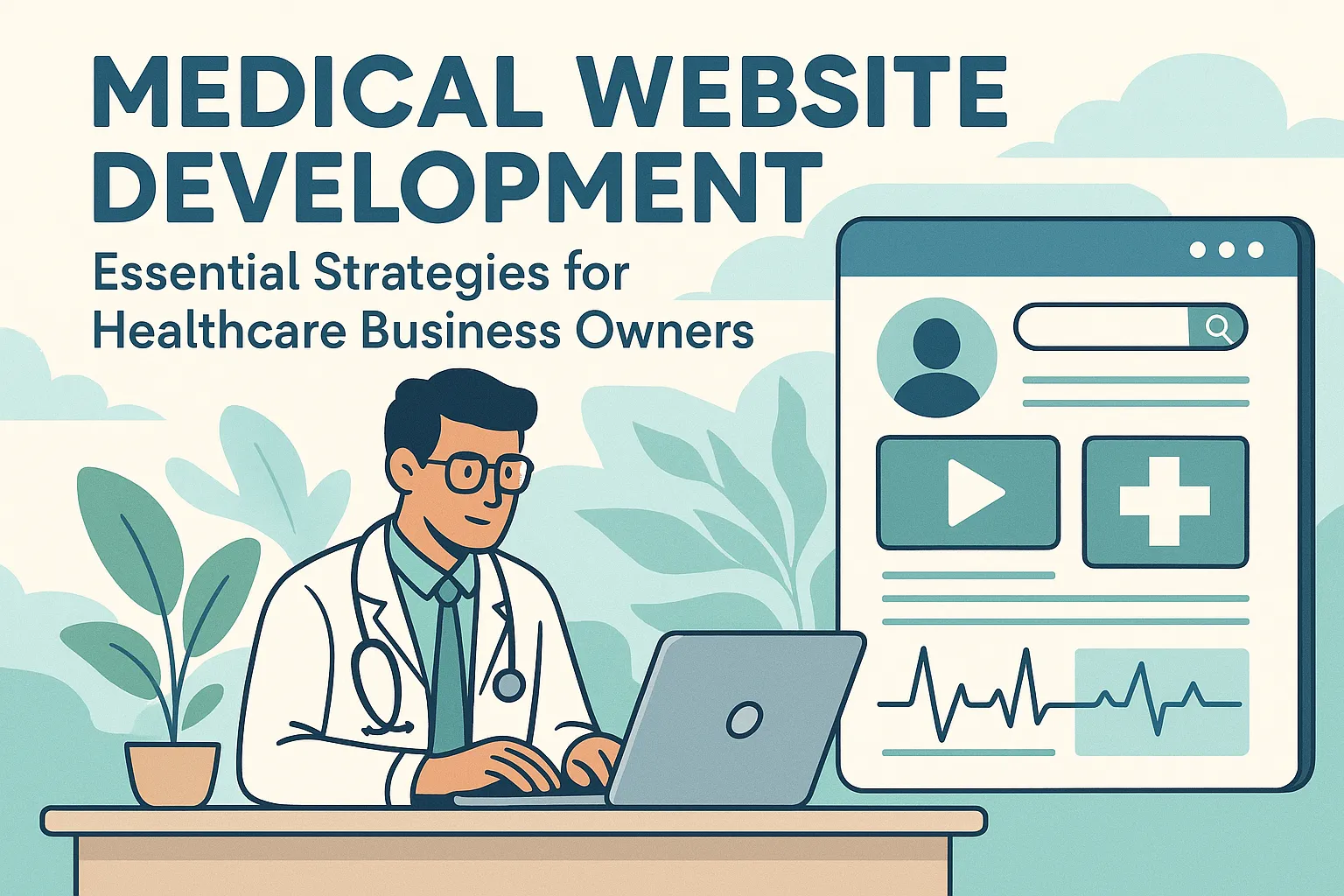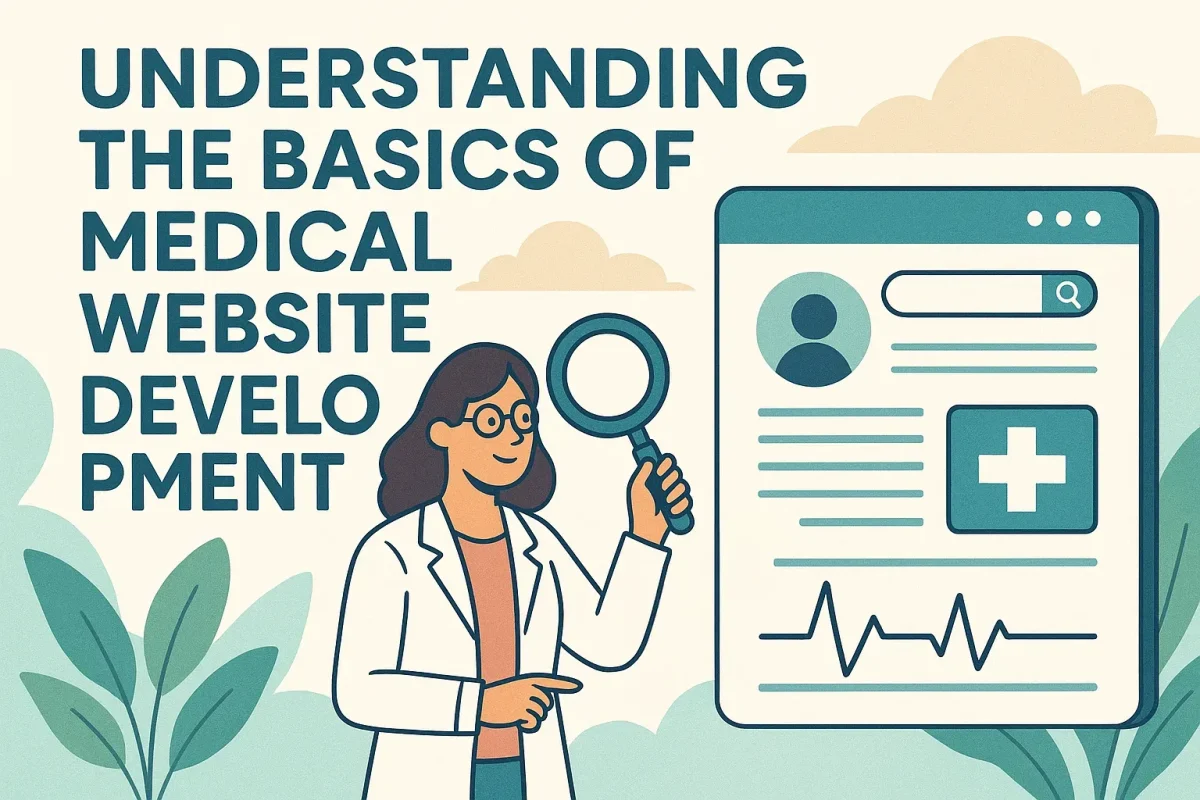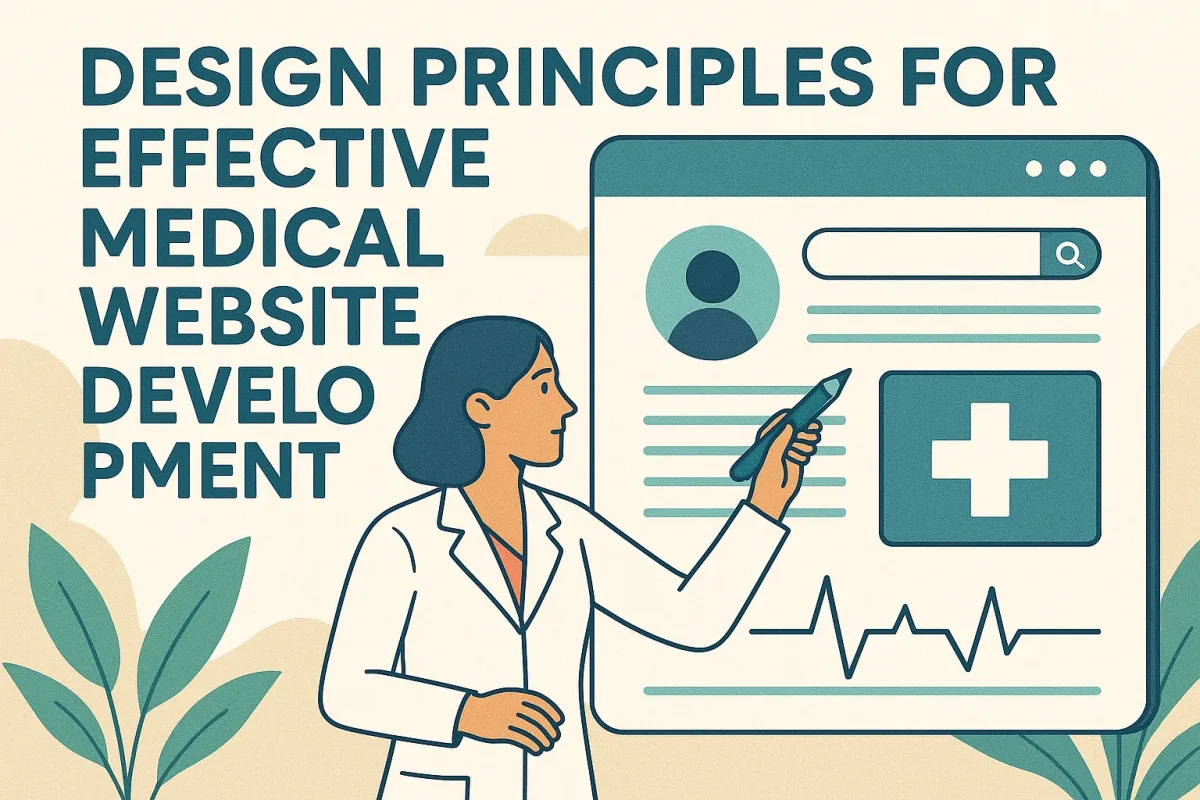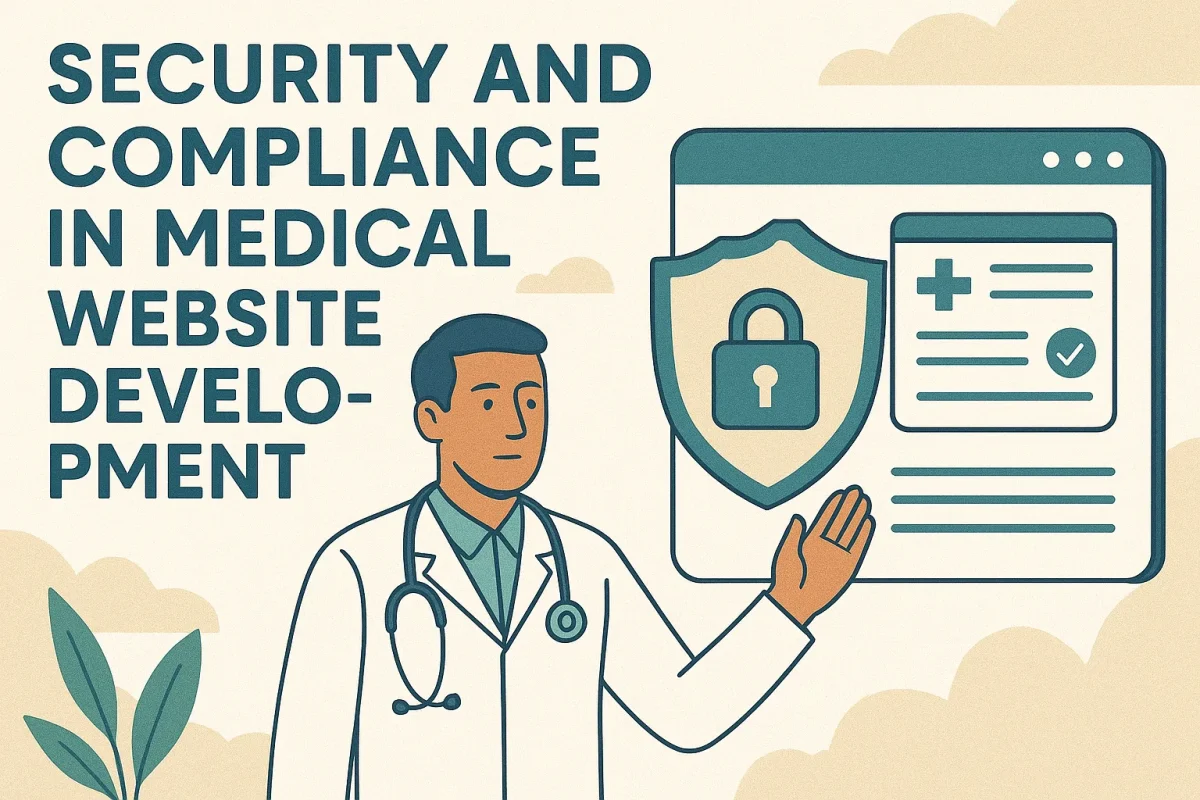Blog
Medical Website Development: Essential Strategies for Healthcare Business Owners

As a business owner or CEO in the healthcare sector, particularly in bustling U.S. cities like New York, Los Angeles, or Chicago, building a strong online presence is key to attracting patients and driving growth. Medical website development focuses on creating sites that not only inform but also convert visitors into loyal clients. This process involves thoughtful design, optimization, and features tailored to medical practices, ensuring compliance with regulations while emphasizing user experience. For small to medium-sized businesses, including contractors handling clinic expansions, medical website development can streamline operations and boost revenue through efficient lead capture.
In high-growth areas across the United States, where competition among medical providers is intense, investing in medical website development helps differentiate your practice. It allows for seamless integration of appointment scheduling, patient portals, and educational content, all aimed at enhancing trust and accessibility. CEOs of medical firms often overlook how a well-developed site can reduce administrative burdens and increase patient retention rates.
Understanding the Basics of Medical Website Development

Medical website development starts with a clear plan that aligns with your business goals. For instance, a primary care clinic in a mid-sized city like Atlanta might prioritize easy navigation for older patients, while a specialty practice in Houston could focus on showcasing advanced treatments.
Key Components to Include
Begin by outlining essential elements. A homepage should feature a clean layout with prominent calls to action, such as “Schedule an Appointment.” Incorporate sections for services, about the team, and contact information. For broader U.S. applications, ensure the site supports multilingual options if serving diverse communities.
Practical explanation: To design an effective landing page, follow these steps. First, identify your primary goal, like capturing email sign-ups for newsletters. Second, use high-quality images of your facility to build credibility. Third, add a simple form with fields for name, email, and phone. Fourth, test the page on mobile devices to confirm it loads quickly and looks professional. This approach has helped many medical businesses in competitive markets increase inquiries by focusing on user needs.
“Partnering with experienced developers can save significant time here, allowing you to focus on patient care while they handle the technical setup for better ROI,” notes a strategy for efficiency.
Expert Medical & Dental Website Development Services
Build fast, secure, and user-friendly websites tailored for healthcare and dental practices. Trusted by clinics seeking professional website developers near me.
Get a Free Website Consultation 0 healthcare and dental websites launched last week
0 healthcare and dental websites launched last week
Common Pitfalls to Avoid
One frequent issue is overloading the site with information, which can confuse visitors. Instead, prioritize concise content that highlights benefits, such as faster appointment booking leading to higher patient satisfaction. Another pitfall is ignoring mobile optimization, especially for users in on-the-go cities like Miami.
Integrating SEO in Medical Website Development
Search engine optimization plays a crucial role in medical website development, ensuring your site appears in local searches. For business owners in the U.S., this means targeting queries from potential patients nearby.
Step-by-Step SEO Implementation
To implement SEO effectively, start with keyword research focused on your services. Next, optimize page titles and descriptions to include relevant terms. Then, create content like blog posts on health topics to attract organic traffic. Finally, monitor performance using free tools to adjust strategies.
Real-world example: A clinic in Denver implemented this by adding location-specific pages, resulting in more foot traffic from online searches. Strategies include regular updates to keep content fresh, which signals relevance to search engines and supports long-term growth.
Benefits for Lead Generation
Optimized sites generate leads by encouraging actions like form submissions. This leads to cost efficiency, as organic traffic reduces reliance on paid ads. Subtly, working with professionals in medical website development can enhance these outcomes, providing tailored SEO that aligns with business objectives.
In this section, here’s a data table showing website performance benchmarks for small businesses, based on industry standards:
| Metric | Benchmark for Small Businesses | Impact on Business Outcomes |
|---|---|---|
| Page Load Time | Under 3 seconds | Reduces bounce rates by 32% |
| Mobile Responsiveness | 100% compatibility | Increases conversions by 20% |
| Bounce Rate | Below 50% | Improves lead quality |
| SEO ROI | 5:1 return on investment | Boosts annual revenue growth by 15% |
| Conversion Rate | 2-5% | Enhances cost efficiency |
This table illustrates how meeting these benchmarks during medical website development directly contributes to measurable growth.
Design Principles for Effective Medical Website Development

Design in medical website development should prioritize trust and usability. For CEOs managing multiple locations across the U.S., a consistent design reinforces brand identity.
User-Friendly Navigation Strategies
Structure your menu logically: Home, Services, Blog, Contact. Use dropdowns for sub-services to avoid clutter. A practical step-by-step for a landing page: Define the objective, sketch wireframes on paper, select colors that evoke calm (like blues and whites), and incorporate testimonials subtly.
Example: A Texas-based medical group redesigned their site with intuitive navigation, leading to a 25% increase in page views per session, which translated to more consultation requests.
“Focus on accessibility features, such as alt text for images, to broaden your reach and improve user satisfaction,” as an actionable strategy.
Visual and Content Best Practices
Use professional photos of staff and facilities to humanize your practice. Content should explain services in simple terms, emphasizing outcomes like improved health management for patients.
Expanding to Specialized Areas Like Dental Website Development
While medical website development covers general practices, specialized fields like dental website development require unique approaches. Dental sites often include before-and-after galleries and educational videos on procedures.
Tailoring Features for Dental Practices
In dental website development, integrate tools for virtual consultations or smile simulators. For U.S. contractors building dental clinics, ensure the site reflects physical expansions, like new office tours.
Step-by-step for SEO in dental website development: Research local terms, optimize service pages, build backlinks from health directories, and track rankings monthly. This has helped dental businesses in cities like Seattle attract more patients efficiently.
Growth Opportunities
Such development supports lead generation by offering free guides on oral health, capturing emails for follow-ups. Partnering with experts in dental website development can accelerate these benefits, saving time for practice management.
Finding Website Developers Near Me for Your Project
When searching for website developers near me, consider local talent in high-growth U.S. cities for personalized service. Proximity allows for in-person meetings, ensuring alignment with your vision.
Criteria for Selection
Look for developers experienced in healthcare, with portfolios showing compliant designs. Ask about their process: discovery, design, testing, launch.
Real-world example: A contractor in Philadelphia found website developers near me who specialized in construction-related sites but adapted for medical integrations, resulting in a hybrid site that managed both patient and project leads.
Collaboration Benefits
Working locally fosters ongoing support, leading to quicker updates and better ROI. This approach is ideal for small businesses scaling across the U.S.
Advanced Techniques in Medical Website Development
Beyond basics, advanced medical website development incorporates analytics and automation. For CEOs, this means data-driven decisions to optimize for growth.
Incorporating Analytics
Set up tracking for visitor behavior. Step-by-step: Install basic analytics, define key metrics like session duration, create reports on traffic sources, and adjust content based on insights.
Example: A Chicago medical firm used analytics in their medical website development to identify popular pages, refining them to increase leads by focusing on high-engagement topics.
Automation for Efficiency
Automate email responses to inquiries for cost savings. Strategies include chatbots for initial questions, freeing staff for complex interactions.
Security and Compliance in Medical Website Development

Security is paramount in medical website development to protect patient data under U.S. laws like HIPAA.
Essential Security Measures
Use SSL certificates and secure forms. Practical steps: Audit for vulnerabilities, update software regularly, train staff on data handling.
Compliance Strategies
Ensure forms collect minimal data and include privacy policies. This builds trust, encouraging more leads.
Mobile Optimization in Medical Website Development
With many U.S. users accessing sites via phones, mobile-first design in medical website development is essential.
Responsive Design Tips
Test across devices. Step-by-step: Design for smallest screens first, scale up, prioritize touch-friendly elements.
Example: A Florida clinic optimized mobile during medical website development, seeing a surge in mobile bookings.
Performance Enhancements
Compress images and minimize redirects for faster loads, directly impacting retention.
Content Strategies for Medical Website Development Success
Content drives engagement in medical website development. Create articles on health tips to position your practice as an authority.
Creating Valuable Content
Focus on patient pain points. Strategies: Use bullet points for readability, update seasonally.
Distribution Methods
Share via social media or email, amplifying reach for lead generation.
Measuring Success After Medical Website Development
Post-launch, track metrics to ensure medical website development delivers value.
Key Performance Indicators
Monitor traffic, conversions, and ROI. Adjust based on data for sustained growth.
Long-Term Maintenance
Regular updates keep the site relevant, supporting business expansion.
Professional Medical & Dental Website Development
Launch a custom-built website with proven strategies for medical website development, dental website development, and easy access to website developers near me.
Request a Free Website ConsultationFAQ
Here are answers to five common questions based on high-volume searches related to natural SEO services, website design for construction companies, and lead generation.
What is natural SEO and why is it important for my business?
Natural SEO, or organic search engine optimization, involves improving your website’s visibility in search results without paid ads. It’s important because it drives consistent, high-quality traffic that can lead to more clients and revenue growth over time, especially for small businesses competing in local markets.
How long does it take to see results from SEO services?
Results from SEO services typically appear within 3 to 6 months, depending on your industry’s competition and the strategies implemented. Initial improvements might include better rankings for specific terms, leading to increased leads, but full benefits like substantial traffic growth often take 6 to 12 months of consistent effort.
What key features should a construction company website include?
A construction company website should include a project gallery with high-quality images, detailed service descriptions, client testimonials, contact forms for quick inquiries, and a blog on industry trends. It should also be mobile-responsive and optimized for local searches to attract contractors and clients effectively.
How can I generate more leads through my website?
To generate more leads, optimize your site with clear calls to action, offer valuable resources like free guides in exchange for contact information, use SEO to target high-intent keywords, and implement forms or chat tools. Tracking visitor behavior and refining based on data can further boost conversion rates.
What questions should I ask when hiring a website designer?
When hiring a website designer, ask about their experience with your industry, whether they build custom or template-based sites, their process for SEO integration, timeline and budget details, and examples of past work. Also, inquire about ongoing support to ensure long-term success.